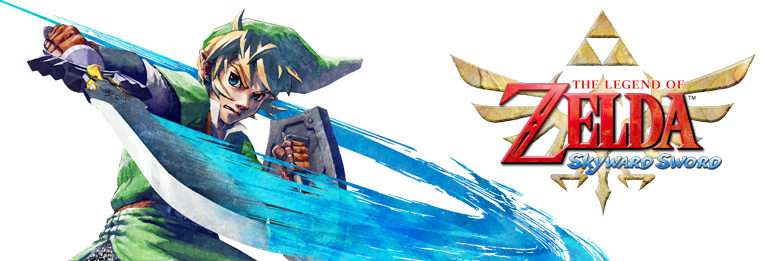The Legend of Zelda: Skyward Sword

When you consider that five years were spent on its creation, it’s no surprise that The Legend of Zelda: Skyward Sword is the best Wii game ever created. In fact, to many it’s one of the best Zelda games in existence. Over 30 publications have given it perfect scores, and several other publications named it best overall game of 2011. Skyward Sword is practically perfect in every way, from the breathtaking graphics and beautiful score to the fabulous plot itself.
The Legend of Zelda: Skyward Sword went back to the very beginning of the Zelda series, giving us the prequel that we had been waiting for. In this incarnation, Link and Zelda are childhood friends on the floating city of Skyloft, situated high within the clouds above the Surface, where a dark evil awaits. As are all the basic plotlines of Zelda, Link is forced to contain evil and keep it from destroying everything that he loves. Though Link remains the mute character that we know and love, what makes Skyward Sword’s plot so amazing are the distinct personalities of the other characters in the game. From the timid Fledge to the infatuated Peatrice, all of the characters in Skyloft and beyond will remain in your mind even after you beat the game. However, I have to say my favorite part about the characters in Skyward Sword is not only the complexity, but the amount of growth that you see in some of them from the very beginning of the game to the end.
Following in the footsteps of previous Zelda games, Skyward Sword also offers multiple opportunities for sidequests. There are several different types of sidequests in this game, from those that will allow you to upgrade your equipment to those that allow you to collect another heart container. The sidequests are an enjoyable way to pass time in the Zelda universe, whether you’re taking a break between temples or are just too scared to go on to the final boss (it’s ok, we’ve all been there!). An added bonus is that some of these sidequests are hilarious, and will give you a good chuckle while you’re doing them.
The storytelling in Skyward Sword is not only done while you’re playing, there are several cinematic scenes that are scattered through, telling important parts of the story. The graphics in these are breathtaking, with crystal clear pictures and vibrant colors that are reminiscent of the childlike quality of The Wind Waker, combined with the more mature art style of Twilight Princess. In short, they’re the best of both worlds.
Music has always been one of my favorite parts of the Zelda universe, ever since I first picked up Ocarina of Time. Though the instrument of power in this game is not used as much as it has been in the past, it’s still a welcome addition to the game. More important, in my opinion, the soundtrack to Skyward Sword is absolutely breathtaking. For the first time, Nintendo decided to utilize orchestral music for several of the more grandiose scenes, causing them to become something more majestic than anything that has been seen in The Legend of Zelda to date.
However, the biggest thing that differs between Skyward Sword and the other games in the franchise are the controls themselves. Nintendo utilized the Wii MotionPlus perfectly in this game, making the play much more realistic. Instead of repeatedly tapping the A button as in the older games, or randomly swinging the remote from side to side as one did in Twilight Princess, you have to actually swing in the right direction to correctly attack an enemy. The best example of this is with the Deku-Baba, a carnivorous plant that has made an appearance in several of the games. In the past, it was easy enough to defeat them, no matter which way you swung the remote. In Skyward Sword though, there are two types of these plants – one that opens its mouth horizontally, and one which opens vertically. The player must swing the remote the corresponding way in order to kill the monster – otherwise you’re toast! Every monster in this game is similar to this, making it much more difficult, but at the same time more rewarding, when you finally defeat it.
All in all, I would recommend Skyward Sword to absolutely anyone, whether you’re a long-time fan of the Zelda games, or brand new to them. The only downside to the game? That it has to end! In The Legend of Zelda: Skyward Sword, Nintendo has introduced an entirely new era of motion-controlled gaming, and I cannot wait to see what the creators bring to us next.




